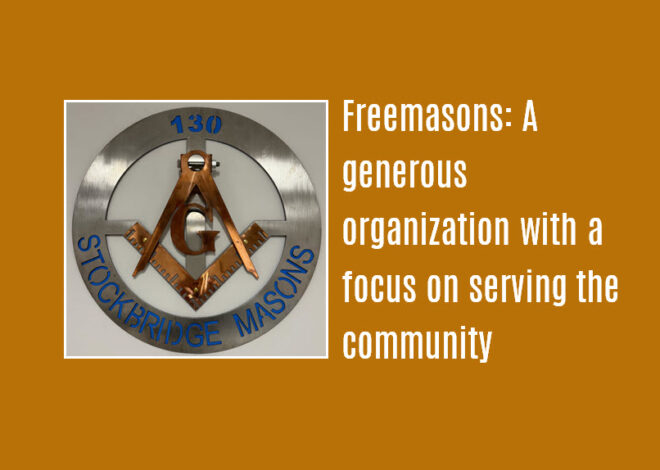
Rock ‘n’ Roll Trivia
Commodores found their name at random in dictionary
by John Robinson
Q: Were the Commodores from Detroit? They used to record for Motown.
A: Nope; the original six members met at the Tuskegee Institute in Alabama in the late ’60s. They were in separate groups, The Jays and The Mystics, so they agreed to merge their two bands together and form a “super” group. As for the name “Commodores,” the legend is that one of the guys threw a dictionary in the air. When it landed on an open page, he blindly put his finger down and it landed on the word “commodore.” They began recording for Motown Records in 1972 and had their first hit in 1974 with the instrumental “Machine Gun.”
Q: I saw a TV show on the ’60s British Rock & Roll Invasion and I have a question. They said that the Dave Clark 5 song “Bits And Pieces” was banned. I see nothing wrong with it. Why would they say it was banned? And if it was, why?
A: In 1964, “Bits And Pieces” became the second U.S. chart single for the Dave Clark 5. It starts out with a loud, rhythmic beat that sounds like foot-stomping. Some show promoters were afraid that if the Dave Clark 5 performed this song in concert, the kids in the audience would stomp along with their feet, possibly causing damage to the floors. So therefore, the song was banned from some (not all) concerts. However, the song was NOT banned from the radio.
Q: I was told the song “Na Na Hey Hey Kiss Him Goodbye” was the first disco song.
A: You must’ve been having a nightmare. It ain’t disco, it’s a just a cool, catchy pop song from late 1969. The song was originally intended to be the B-side of a supposed hit single for vocalist Gary De Carlo. Gary, Paul Leka and Dale Frashuer intended to create a song so cheesy it could only be thought of as an inferior track and was written intentionally to be so awful that DJs would be forced to play the the A-Side. So, they made the song too long and even had an off-key backing vocal. Also, the musicians didn’t have lyrics so they sang “na na” and “hey hey” during rehearsals until they came up with something better (which they never did!). However, Mercury Records liked the song and released it under a bogus band name, “Steam.” It was an unexpected hit and the songs they recorded that were MEANT to be hits never DID become hits…so, one of the singers, Garrett Scott, refused to sing any more songs with Steam and did not help with the full-length album.
Q: My brother says that a candy company sponsored the bubblegum group The 1910 Fruitgum Company. Is he right?
A: No, he’s not right! The inspiration for the band name “1910 Fruitgum Company” came from member Frank Jeckell. He found an old bubble gum wrapper while going through an old trunk in his attic. The New Jersey band’s biggest hits were “Simon Says,” “1-2-3 Red Light” (both from 1968), and “Indian Giver” (1969).
Q: What was the name of that other religious rock musical that came out after “Jesus Christ Superstar?”
A: I believe you’re thinking of the Broadway musical “Godspell,” which was based on the Scripture of St. Matthew. It spawned the 1972 Top 20 hit single “Day By Day.” “Godspell” was originally conceived as an essay by Carnegie Tech student John-Michael Teblak to complete his master’s program.
Q: My grandson doesn’t believe me that records were called “platters” or that the group of the same name was named after them. Please set him straight.
A: It’s true, grandkid. The group who called themselves “The Platters” (whose 1950s hits include “Only You,” “The Great Pretender” and “Smoke Gets In Your Eyes”) began as an all-male quartet in 1953 (adding a female member later) and named themselves after the nickname used in the “olden days” for vinyl records.
Q: I always get confused by the two versions of “Everlasting Love.” So who did it first?
A: Yeah, sometimes it’s hard to tell the versions apart if you don’t scrutinize the song whenever you hear it. The original version was recorded by Robert Knight in 1967. Carl Carlton recorded the song in 1972 but the record label he was recording for was sold, so his take on “Everlasting Love” wasn’t released until 1974. Then, a version by Rex Smith & Rachel Sweet made it into the Top 40 in 1981. In 1978, Andy Gibb had a hit with a record titled “Everlasting Love” but it was a different song entirely. To add to the confusion, there were two other entirely different songs with the title “Everlasting Love” that made the charts: one in 1989 by Howard Jones and another in 1992 by Tony Terry.
 John Robinson grew up in Stockbridge and graduated from Stockbridge High School in 1969.
John Robinson grew up in Stockbridge and graduated from Stockbridge High School in 1969.
He’s been an author, TV host, columnist, actor, producer, emcee and radio broadcaster. Robinson’s favorite music of all time includes surf, psychedelia, garage bands, Motown and just plain ol’ good-time rock ‘n’ roll. To read more rock ‘n’ roll trivia, “Paranormal Michigan” stories, and lots more, check out Robinson’s books on his author page at facebook.com/johnrobinsonauthor.



